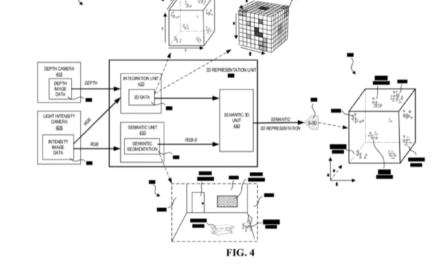An Apple patent (number 20120200498) for a motion tracking user interface shows that the company is at least considering such technology for Macs and perhaps the rumored “iTV.”
The patent involves a method to transition focus of a display corresponding to an object’s motion tracked by a video camera or like device is disclosed. In one implementation, the display shows one or more windows or user interfaces on the display. The object’s motion can be used to select one of the windows or user interfaces on the display and manipulate content presented in the window or user interface.
In another implementations, the object’s motion can manipulate a three-dimensional graphical icon in a three-dimensional display environment, for example, by rotating it. In another implementation, the method further tracks motion of a second object and shifts focus of the display corresponding to the motion of the second object. In another implementation, a second display may be added to mirror the focus transition corresponding to the object’s motion.
Here’s Apple’s background and summary of the invention: “Input devices for computer systems commonly include a mouse, a keyboard, or other input devices (e.g., a pen-based device, a track ball, etc). Each of these input devices requires a user’s spare hand to operate. In some cases, a user may need both hands free to complete a task (e.g., typing on a keyboard) or the user may suffer from a disability that precludes the use of one hand. When the user desires to interact with the computer system, the user must interrupt the task to manipulate an input device.
“A method to transition focus of a display corresponding to an object’s motion tracked by a video camera or like device is disclosed. In one implementation, the display shows one or more windows or user interfaces on the display. The object’s motion can be used to select one of the windows or user interfaces on the display and manipulate content presented in the window or user interface.
“In another implementations, the object’s motion can manipulate a three-dimensional graphical icon in a three-dimensional display environment, for example, by rotating it. In another implementation, the method further tracks a second object’s motion in the display and shifts focus of the display corresponding to the motion of the second object. In another implementation, a second display may be added to mirror the focus transition corresponding to the object’s motion.
“Particular embodiments of the subject matter described in this specification can be implemented to realize one or more of the following advantages. A user can free the use of both hands while navigating a user interface or interacting with an application on a computer system.”
Kevin Quennesson is the inventor.


